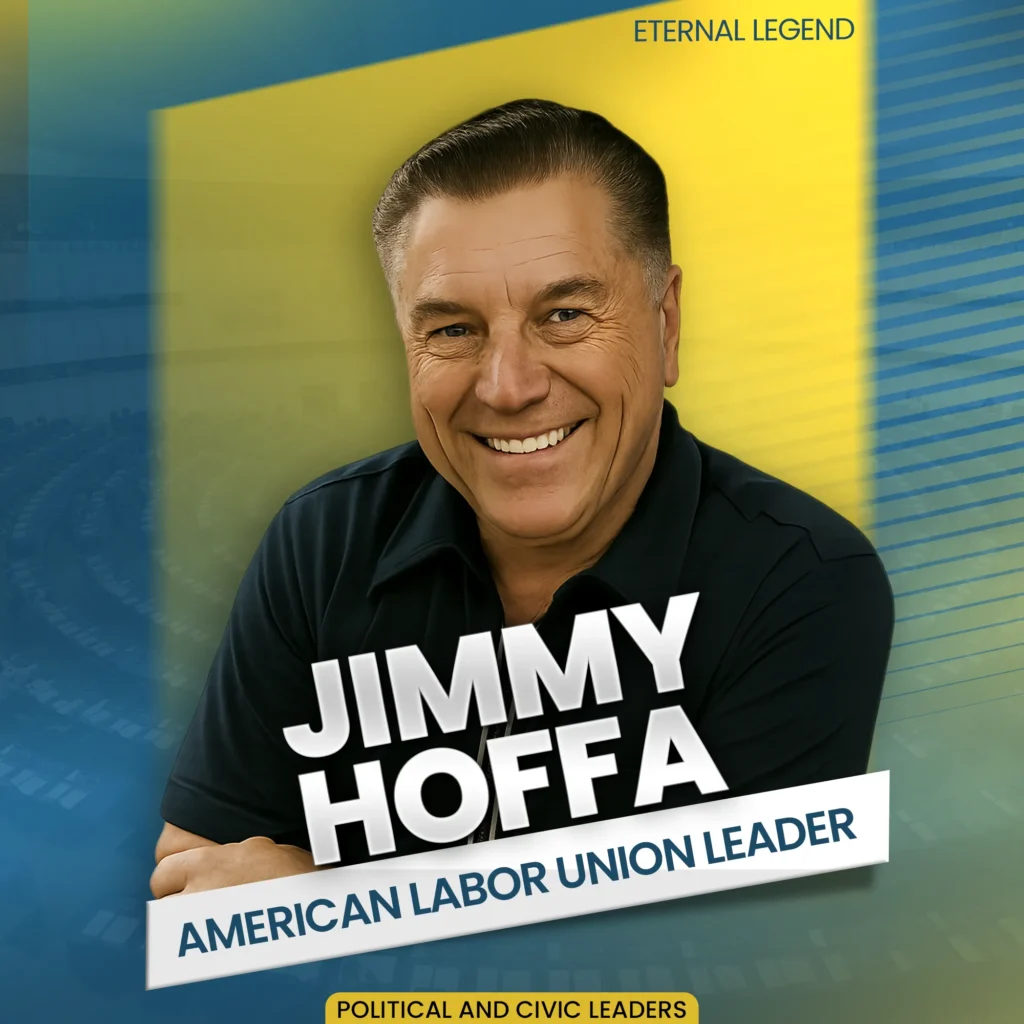Simply say Jimmy Hoffa’s name to any Detroit native will elicit a reaction, be it a story, a joke, or some long-winded theory.
Few names in the history of American labor (or American folklore) carry as much weight as Jimmy’s does.
However, long before the mob rumors and missing person posters, Hoffa was something else entirely: the man known for single-handedly handing the working-class back their power.
Indiana Roots, Motor City Rise
Jimmy Hoffa relocated to Detroit from his birthplace of Brazil, Indiana, as a child. His father had passed away at a young age, and his mother decided to move the family to Michigan in search of a fresh start, which led to Hoffa leaving school at the tender age of 14 to step up and support them all in his father’s absence.
He wasn’t the type who rose through the ranks of the workforce with a fancy résumé.
He rose with hard work, instinct, and a whole lot of charisma, not to mention a natural knack for reading the room, and by his early 20s he was organizing workers at Kroger warehouses at a time when Detroit was considered a labor war zone.
It was the 1930s and 1940s, and though the auto industry was booming at this time, workers were overworked, underpaid, and brutalized if they even dared speak out.
Hoffa saw all this, and he took it to heart.
He understood that if you wanted to win, you would have to be the loudest voice in the room, not to mention far tougher and more strategic than the ones running the show.
Rise of the Teamsters
Wanting to do his part in fighting back against the corruption being faced by the working class, Hoffa became president of the International Brotherhood of Teamsters in 1957, a union that exploded in size and influence under his leadership.
Through the Teamsters, Hoffa got to work negotiating better pay for workers, outlining plans for fairer pensions, and implementing safer work conditions for millions of blue-collar laborers all across the country, from warehouse workers to truckers and everything in between.
Not only that, but he also helped bring forward the first National Master Freight Agreement, which was responsible for standardizing contracts for truckers – a colossal shift in American labor.
For Detroiters, Hoffa was the best hometown hero anyone could ever ask for.
The working class regarded him as one of their own – unapologetic, hard-nosed, and fiercely loyal to those who truly deserved it.
That said, Hoffa’s rise didn’t come without its pushback.
Jimmy Hoffa: Detroit’s Most Mysterious Disappearance Case – The Titan for the Working Class
313 Legends
Jimmy Hoffa
Eternal Legend

Born: February 14, 1913 – Brazil, Indiana
Disappeared: July 30, 1975, in Bloomfield Township, Michigan
Detroit Era: 1924–1975
Legacy: Centerpiece of one of Detroit and America’s most mystery unsolved disappearances, Influential labor leader, president of the International Brotherhood of Teamsters, and the driving force behind one of the most powerful unions in American history.
Introduction
Bring on the Woes: The Mob, the Feds, and the Fall
As powerful as the International Brotherhood of Teamsters was under Hoffa’s rule, they were also deeply entrenched in organized crime.
Make no mistake: Hoffa made his fair share of dirty deals to keep things moving forward, and while many considered him pragmatic, he was also dangerous – so much so that come the 1960s, the Kennedy administration branded Hoffa as something else entirely: a target.
From that moment onward, U.S. Attorney General Robert F. Kennedy relentlessly pursued him, which ultimately led to Hoffa being convicted of jury tampering and fraud in 1967.
His sentence?
A staggering 13 years in federal prison, which would later be reduced to five after President Nixon decided to commute his sentence.
Hoffa was also banned from union leadership as a result of his conviction and sentencing, and yet, he still refused to stay quiet.
By the mid-1970s, Hoffa went up against his successors and greatly upset his former alliances, putting pressure on people who preferred him gone by actively working to reclaim his position…that is until July 30, 1975…aka, the day Hoffa would vanish without a trace.
Missing in Action
Jimmy Hoffa went missing on a sunny afternoon in Bloomfield Township.
As the story goes, he was supposed to meet with two known mob figures at a restaurant just outside Detroit, yet he never made it home.
Instead, his car was found in the parking lot…but his body?
To this day, it’s never been found.
What followed was decades of endless speculation:
Was he buried somewhere? Dissolved in acid? Taken out by old rivals? Finally silenced by the mob?
Nobody knows, but even to this day, Detroiters have never stopped wondering.
Final Word: Jimmy Hoffa, Man of Power and Mystery
Like him or hate him, there’s no denying the fact that Jimmy Hoffa built one of the most powerful labor machines in American history, an achievement that earned him much adoration from Detroit’s working class.
His disappearance is the stuff of Hollywood movies, but his impact is so much greater than that.
He was Detroit’s most feared, admired, and unforgettable labor warriors, and for that…his legend will live on for decades to come.
About the Author

Victoria Jackson (Editor In Chief)
Victoria Jackson is a lifelong student and sharp-eyed documentarian of all things Detroit, from its rich musical roots and cultural icons to its shifting neighborhoods, storied architecture, and underground legends. With her finger firmly on the pulse of both the city’s vibrant past and its rapidly unfolding future, she brings a deeply personal, historically grounded lens to every piece she writes.
Published on: September 16, 2025


 Please check your email for your login details.
Please check your email for your login details.